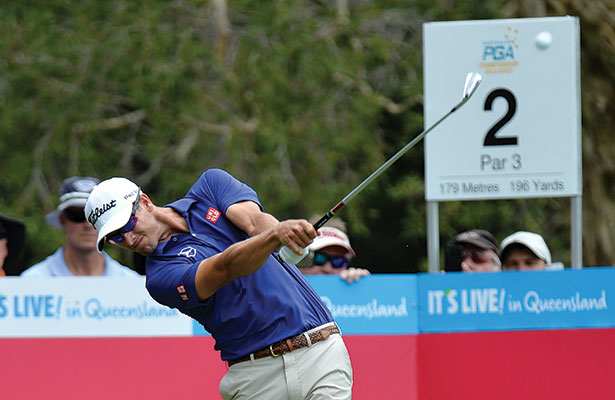The PGA of Australia has taken the initiative to jump, rather than wait to be pushed, in a bid to strengthen its marquee tournament.
THE convoluted story of Australian tournament golf took another turn this month, with the announcement the PGA of Australia had formed an alliance with the European Tour to co-sanction its marquee summer tournament.
In the great tradition of everything old becoming new again, it formalises an off-and-on relationship in place between the two organisations that began in 1996.
For 2015, this will mean that just one event, the Australian PGA Championship at Royal Pines, will have dual tour status. Under discussion is the inclusion of the Australian Masters and the Perth International as tournaments on the 2016 European Tour schedule, in either February or March. Both remain subject to confirmation.
For the PGA of Australia, there were few remaining options than to reach out to the European Tour. Its investment in the OneAsia Tour as a co-founding partner has amounted to little. OneAsia’s vision to “unite professional golf in the Asian Pacific” has, to this point, proved a bridge too far. Only one new event has been added in the past three years. A schedule that included 10 events in 2010 has shrunk to seven in 2015. Tellingly, the PGA Championship still appears as a tournament on the OneAsia Tour’s website yet there is no provision for OneAsia members in the entry categories for this year.
The principles behind Australia’s involvement in the OneAsia concept are sound. First, align Australian tournament golf with the emerging economic powerhouse of Asian business. Second, have a hand at the wheel in driving the future direction of Australian tournament golf. Third, and perhaps most importantly for the PGA ( a member-based organisation) was the creation of player pathways out of Australia.
OneAsia’s failure to grow in line with its stated ambitions is a direct result of the resistance it faces in Asia. The opportunities available to it have been hampered by the opposition of the Asian Tour, which is backed by the European Tour and its broadcast partner, IMG. A marketplace that once looked almost boundless with possibility is now confused and commercially convoluted as potential corporate partners find themselves pitched to by multiple organisations selling essentially the same product. Prospects for further growth for either entity appear to be minimal without some form of consolidation – a realisation that has no doubt influenced the PGA of Australia’s decision.

On paper, one benefit of the European Tour relationship is stronger fields for Australian tournaments. However, in the past this has proven to be something of a pipedream for Australian golf as droves of Europe’s marquee players shunned the trip Down Under, deciding that a snowy northern winter was better than a week of jet lag, small purses and a shocking tax regime.
Memories of the 2008 Australian Masters, where Europe was barely able to provide enough players to fill the field, has not completely faded with time. The likely continuation of this trend has been tacitly recognised by the fact that 30 places in the PGA field have been given to the (South African ) Sunshine Tour, whose members will jump at the chance to fill their boots with prizemoney worth nearly 10 times that of their national currency – the rand.
It will be a more cosmopolitan field teeing off this year. The PGA of Australia has taken the initiative to jump, rather than wait to be pushed, trying to strengthen the future of its championship in the toughest market for tournament golf in living memory.
The ratings? They’ll be good. But the ripple effect of this decision will make for interesting viewing.




